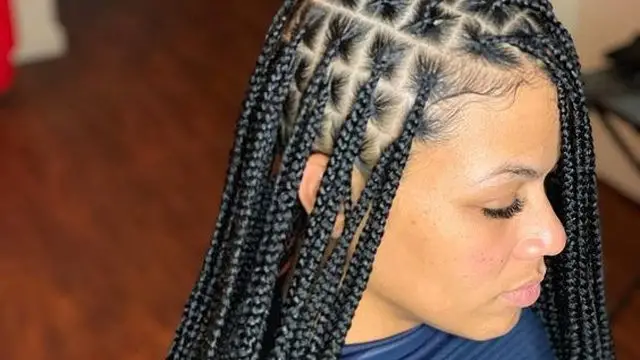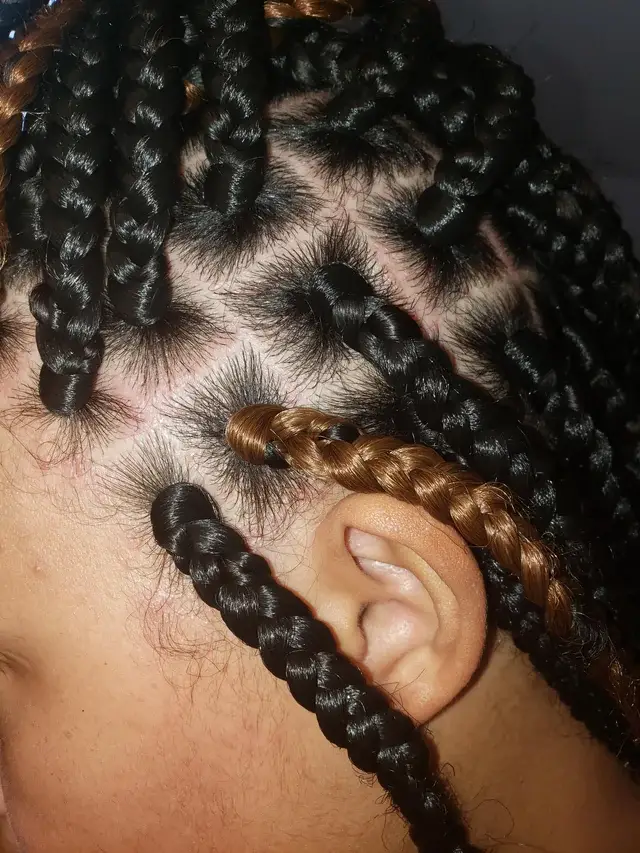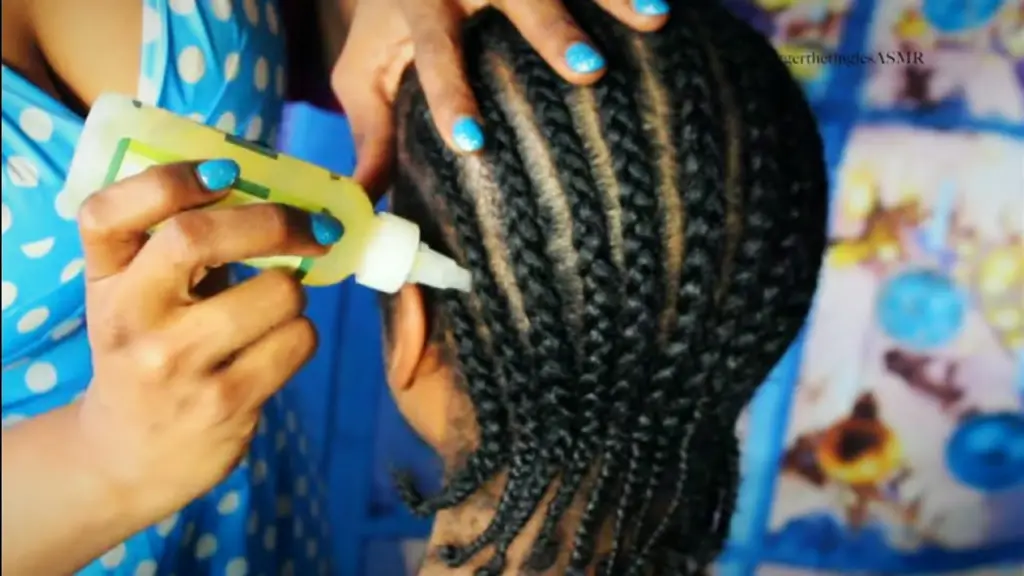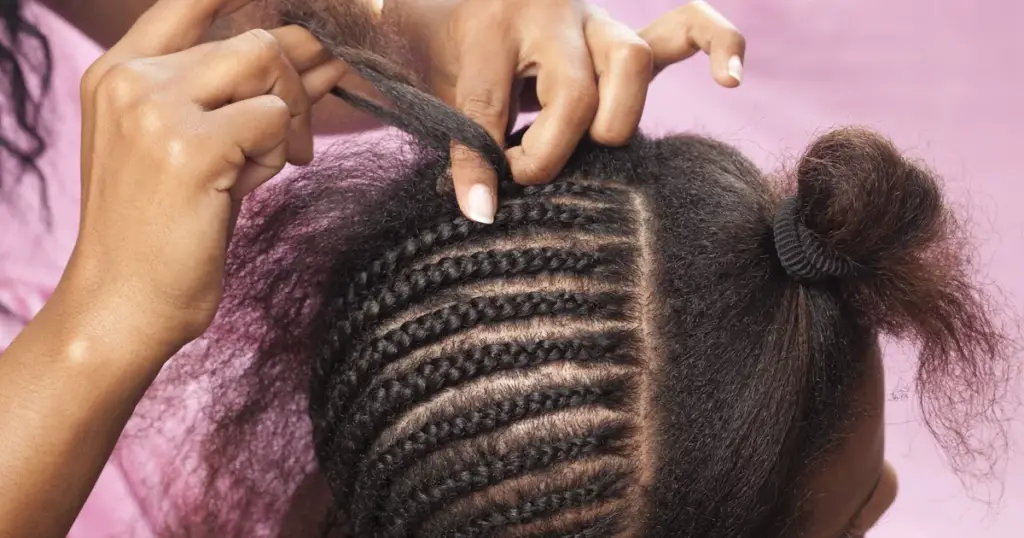Braid bumps can typically take a few days to go away. A full healing, however, may take up to one month. During this period, avoid hair tension, and consider leaving braids for 2-3 weeks. If severe pain persists beyond 48 hours, seek treatment and avoid tight braids to prevent more irritation.
You can discover more about the time it takes for braid bumps to go away and more from this article.

Key Takeaways
- Inflammation of the hair follicles causes braid bumps.
- The most common symptoms are inflammation, soreness, and discomfort.
- Moisturizing your scalp is crucial as a treatment.
- Avoid stressing your hair and scalp to prevent braid bumps.
How Long Does it Take for the Braid Bump to Go Away?
If you prioritize releasing the strain on your hair, the bumps itself will go away in 2-3 days. When you get a braid, it is normal to get braid bumps because of the tension your scalp goes through. But over time the braids should loosen on their own, making the bumps go away.
But if that does not happen, you need to apply different techniques to lessen the stress caused by the braids. With everything, the bumps should be gone within a week.
Why Do You Get Braid Bumps?
Braid bumps occur because hair follicles get inflamed, which is also a condition known as folliculitis. This is usually caused by fungal or bacterial infections, but stress or tension on your hair can also contribute.
The tightness of braids is a key factor behind braid bumps, as it puts strain on the hair follicles. These bumps often cluster around the hairline and within braids. Sometimes, even post-braiding styling choices like pulling hair back tightly into a bun can lead to these bumps.
Braid bumps may not seem like a big deal but neglecting them might lead to scalp injuries. That’s why you should braid properly and keep an eye out.
Symptoms of Braid Bumps
Symptoms of braid bumps, also known as folliculitis, can vary but commonly include:
- Swelling or bumps on the scalp: Braid bumps are characterized by small red bumps along the hairline or stress points on the scalp.
- Inflammation and tenderness: There may be itchiness and discomfort in the affected area.
- Pain: Prolonged or severe pain that doesn’t resolve within 48 hours may be a symptom of braid bumps.

How To Treat Braid Bumps
Treating braid bumps is all about moisturizing your scalp and putting less strain on your hair roots. There are different methods to achieve that, so we have listed them all for you-
Method 1. Wear Hair Down
Since you are already suffering from braid bumps and in pain, skip tight hairstyles like ponytails or updos. Try keeping your hair down, as it will reduce pressure on your scalp, giving it relief.
Method 2. Wet with Warm Water
To even relieve your pain further, you can wash your scalp with warm water. Stand under a warm shower to let the water soothe your braids. Be aware, however, that this may compromise your braid’s durability.
As an alternative, you can dampen a towel with warm water and gently pat your scalp. Or, you can use cool water too if you like, but warm water works better. You may need to do this repetitively until the bump goes away.
Method 3. The Pencil Method
The pencil method is an unorthodox method that does not work for everybody but is still worth a shot. The pencil method works by loosening your braids with a pencil or a similar sharp object.
This method involves inserting a pencil or similar object into the center of your braid or near your roots. Gently move it to ease the tightness of the braid. If this method works for you it can give instant relief.
Method 4. Scalp Massage with Oil
A good method to relieve the tension is to massage your scalp with oil. Massage oil gently into your scalp with your fingertips. It boosts blood circulation, reduces dryness, and helps loosen tight braids.
The oil will also help loosen the braids.

Method 5. Apply Heat Using A Hair Steamer
If you have a hair steamer at home, you can apply moist heat to your braids instead of oil. Not only does this ease tension, but it also opens up your scalp’s pores for better moisture absorption.
Method 6. Leave-In Conditioner
You can also try using a leave-in conditioner to moisturize your hair. For that, you need to apply a leave-in conditioner of your choice to your roots. But remember to use it moderately to avoid buildup.
Final Method: Remove Braids
The braids may have to be taken out if discomfort persists after 2 or 3 days of applying these methods. This should be your last resort but if it comes to this do not hesitate to do this. You must always prioritize your health over the time and money invested.
After taking out the braids, gently detangle your hair with your fingers. Wash it using a clarifying shampoo and follow up with a deep conditioner. Allow your hair to rest before getting new braids to minimize tension.
These methods we suggested are very simple but naturally, you will require various products to apply them. Here is a list of the products that we recommend you use-
| Products | Features |
| OGX Renewing + Argan Oil of Morocco Penetrating Hair Oil Treatment | Suitable for all hair types, textures, and moisture levels. |
| Paul Mitchell Shampoo Two | Great for oily hair. It has an energizing, sharp, and crisp lemon scent. |
| Marc Anthony Leave-In Conditioner Spray & Detangler | Free of parabens, SLS, sulfates, and phthalates |
| Palmer’s Coconut Oil Formula Hair Conditioner | Hydrates and restores dry, damaged, and dull hair quickly |
How To Avoid Getting Braid Bumps
Braid bumps could have been avoided if you were careful the first time you got braids. To avoid any future braid-related pains, you can keep these in mind-
Gentle Installation
While you’re getting the braids, stay aware of how your scalp feels. If you experience discomfort or pain, don’t hesitate to speak up. A considerate stylist will adjust the tension accordingly.
A stylist should know about your hair’s needs and any scalp sensitivity you may have before braiding your hair. However, if they don’t listen to your concerns, it might be worth seeking out another stylist. Also, check if the person has a license to braid hair.
If you prefer braiding your hair yourself, go easy, particularly around the roots where the braids begin. Being gentle prevents unnecessary strain on your scalp and minimizes the risk of those pesky bumps.
Also, a tip worth noting is to leave the tiny hairs around the edges of your hairline out of the braids. This little step can make a big difference in preventing irritation.
Change Braid Type
Sometimes, the material used in synthetic fiber braids can irritate your scalp. This irritation might lead to itching and eventually result in those pesky bumps. Certain synthetic fibers are coated with an alkaline substance that can rub against your scalp and trigger irritation.
To avoid this, you can experiment with different types of braids made from various materials. By trying out different options, you can determine whether a specific material is causing the issue.
This can help you find a braid type that suits your scalp better and minimizes the risk of developing uncomfortable bumps.
Choose a Comfortable Hairstyle
After getting the perfect braid, choose a comfortable hairstyle to avoid putting extra stress on your hair. There are a lot of comfy braid hairstyles you can choose from.

Tips For Taking Care of Your Braids
To have a healthy scalp and stress-free hair, taking proper care of your hair is a must. That’s why here we have some necessary tips, following which you can maintain a beautiful braid.
- Moisturize the Scalp as Often as Possible
Regularly moisturize your scalp to control dryness and flakiness. A dry scalp can result from conditions like psoriasis, eczema, or dehydration. Keep your scalp hydrated while wearing braids. Use water followed by shea butter or other options like aloe vera-based products, coconut oil, tea tree oil, or essential oils.
- Wash Your Braids Every Other Week
Clean your braids to prevent dirt and odor buildup. Use shampoo and water, or dry-wash them with a damp cloth and shampoo. Be gentle to prevent hair shaft damage.
- Avoid Unnatural Moisturizing Products
Steer clear of moisturizers containing mineral oils. Opt for natural oils like almond or coconut oil, and consider using a natural leave-in conditioner for non-greasy moisture.
- Be Gentle on Your Scalp
Wash your braided scalp gently to avoid harm. Dry by squeezing, not pulling. Massage your scalp evenly during the application of hair products.
- Try a Wig
If braiding your own hair is discomforting for you, you can braid a wig and then wear it.
- Leave Braids Untied
Avoid tight up-do styles to protect hair edges. Experiment with styles that won’t strain your braids.
- Don’t Wear Your Braids for Too Long
Limit braiding to around six to eight weeks to avoid hairline damage and breakage.
- Don’t Neglect Your Nighttime Hair Regime
Wrap your braids with a silk scarf before sleeping to safeguard edges, and roots, and prevent breakage.
Frequently Asked Questions
Why Do Braid Bumps Itch?
Braid bumps can lead to itching due to excess tension on hair follicles. This can cause irritation, red bumps, and even thinning areas. Watch out for these signs, which might indicate traction alopecia and potential hair loss.
Can I Shower Every Day With Braids?
Showering daily with braids is okay, but avoid the misconception of not washing braids to maintain the style. You should cleanse every 2-3 weeks to keep your scalp healthy.
Do Braids Make Your Hair Healthy?
Yes, braids can contribute to healthier hair. They reduce daily wear, friction, and breakage, which can lead to damage and frizz. By preventing these issues, braids support hair growth and overall hair health.
Conclusion
To sum up, braid bumps can take a few days to a week to go away. But this time duration can vary based on the severity of the situation and how you are taking care of it. Patience and gentle scalp care are key in helping braid bumps go away faster.
- Crochet Braid Hair Cost: Hope for a Style to Slay!! - January 9, 2024
- Best Braid Pattern For Crochet: Hair-Styling Tips And Tricks - January 3, 2024
- How To Braid Hair For Crochet: Best Hair-Styling Tips! - December 26, 2023
